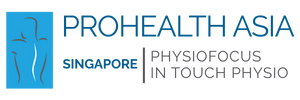The Ultimate Guide to Non-Invasive Back Pain Relief: Your Path to a Pain-Free Life
Back pain is a universal experience, a relentless ailment that can drain your energy and diminish your quality of life. If you're seeking relief without resorting to surgery or strong medications, you're not alone. The good news is that a multitude of effective, non-invasive strategies can help you reclaim a life free from pain. This guide illuminates the path forward, empowering you with knowledge and practical solutions.
The first and most crucial step is obtaining an accurate diagnosis. Back pain is a symptom, not a disease itself. It can stem from muscular strain, herniated discs, arthritis, sciatica, or poor posture. Consulting a healthcare professional—such as a physical therapist, chiropractor, or physiatrist—is essential to identify the root cause and create a targeted treatment plan. Self-diagnosing can often lead to further injury.
Once you understand the cause, a world of non-invasive options opens up. Physical therapy is often the cornerstone of treatment. A physical therapist will design a personalized exercise program focusing on core strengthening. Your core muscles act as a natural corset for your spine; strengthening them provides crucial support and reduces strain on your back. Equally important is improving flexibility through targeted stretching, which alleviates tension in tight muscles like the hamstrings and hip flexors that contribute to pain.
Manual therapies are another powerful tool. Skilled practitioners like chiropractors and osteopaths can perform spinal adjustments and manipulations to improve spinal alignment, increase mobility, and reduce nerve irritability. Massage therapy is excellent for relieving muscle tension, improving circulation, and breaking down painful trigger points.
Modern technology also offers innovative solutions. Treatments like transcutaneous electrical nerve stimulation (TENS) use mild electrical currents to disrupt pain signals to the brain. Laser therapy can reduce inflammation and promote tissue healing at a cellular level. These modalities are typically used in conjunction with other therapies for a comprehensive approach.
Your daily habits play a monumental role in both causing and alleviating back pain. Ergonomic adjustments are a simple yet profound change. Ensure your workspace supports your spine: your computer monitor is at eye level, your chair supports your lower back, and your feet rest flat on the floor. When lifting objects, always bend at the knees, not the waist.
Furthermore, mind-body practices like yoga and Pilates are exceptional for building core strength, enhancing flexibility, and teaching body awareness. They also incorporate mindfulness and controlled breathing, which can help manage the perception of pain. For acute flare-ups, alternating ice packs (to reduce inflammation) and heat pads (to relax muscles and improve blood flow) can provide immediate, soothing relief.
The journey to a pain-free back is not a one-size-fits-all solution. It requires patience, consistency, and a proactive mindset. By combining professional guidance with targeted exercises, smart daily habits, and advanced non-invasive therapies, you can build a stronger, more resilient back. Remember, the goal is not just to eliminate pain today, but to build a foundation for a healthier, more active life tomorrow. Your path to lasting relief starts with the decision to explore these safe and effective strategies.

